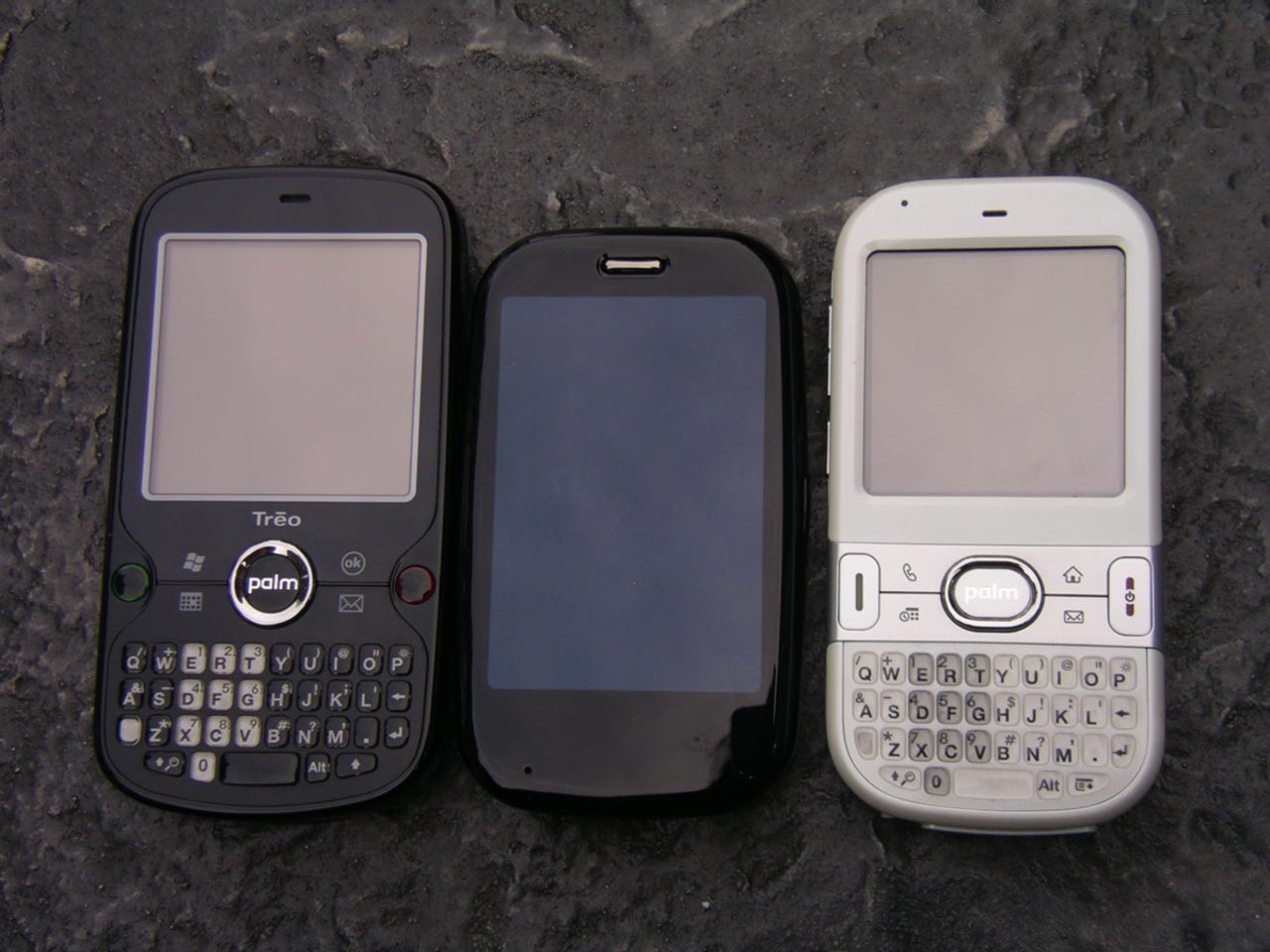Image Gallery: A look at the Palm Pre Plus and Pixi Plus on Verizon Wireless


This review is one of the hardest I had to write because I have a long history with Palm devices (started using them in 1997) and I had high hopes for their new WebOS operating system after they blew us all away at CES 2009. I actually stood in line and bought my own Sprint Palm Pre last summer and posted some thoughts on it at that time. There have been several software updates since last year and at CES 2010 Palm announced the Palm Pre Plus and Pixi Plus launching on Verizon Wireless with the ability for the Pre Plus to act as a MiFi and share out wireless Internet. Palm sent me a device to try out for a couple of weeks and I am glad they did because they saved me a ton of money since I was considering a switch from my Verizon MiFi to the Pre Plus.
The Palm Treo Pro, Pre Plus, and Palm Centro lineup.
The Palm Treo devices were always known to have excellent QWERTY keyboards, but these latest units have taken the QWERTY keyboard down to a very small size that gives you a cramped feeling.
Here is a closer view of the three QWERTY keyboards.
The Centro is on the Pre Plus that is on the Treo Pro.
The Pre Plus is a short squatty device that feels like a large skipping stone in your hand.
The display is a bit wobbly as it slides up to reveal the QWERTY keyboard.
The keys are quite small, but there is some space between each one. It takes a bit of practice to get fast at text entry on the Pre Plus.
The chicklet keys have a rubber feel to them so you can feel each key.
Thankfully Palm uses a standard microUSB port for charging up the Pre Plus. The door isn't really necessary though.
There is a standard 3.5mm headset jack on top, along with a traditional Palm ringer switch and the power button.
There are two buttons for volume control on the left side of the Pre Plus.
A small camera, flash, and speaker are found on the back of the Pre Plus.
Palm has the back cover coated in soft touch material. The back cover can be replaced by a Touchstone capable back as well.
The front hardware button has been removed and I never found the need for it while using the Pre Plus.
The Pre Plus is packed in a slick box and the Touchstone charging unit is an added accessory.
Thumbnail 1
Thumbnail 2
The Palm Centro, Pixi Plus, Pre Plus, and Treo Pro lineup.
Here you can see all four devices with keyboard exposed.
Palm is focused on providing devices with hardware QWERTY keyboards. These new generation ones are not as usable as the older Treo models though.
Here you can see the difference between the two newest Palm devices.
The Pixi Plus keyboard has smaller keys, but they are better spaced than on the Centro.
The Pixi Plus is extremely compact and pocketable.
There are no buttons or ports on the left side.
The volume controls, ringer switch, and microUSB access port are found on the right side.
A 3.5mm headset jack and the power button are found on the top.
The Pixi Plus keyboard is small, but still usable.
Thumbnail 1
Thumbnail 2